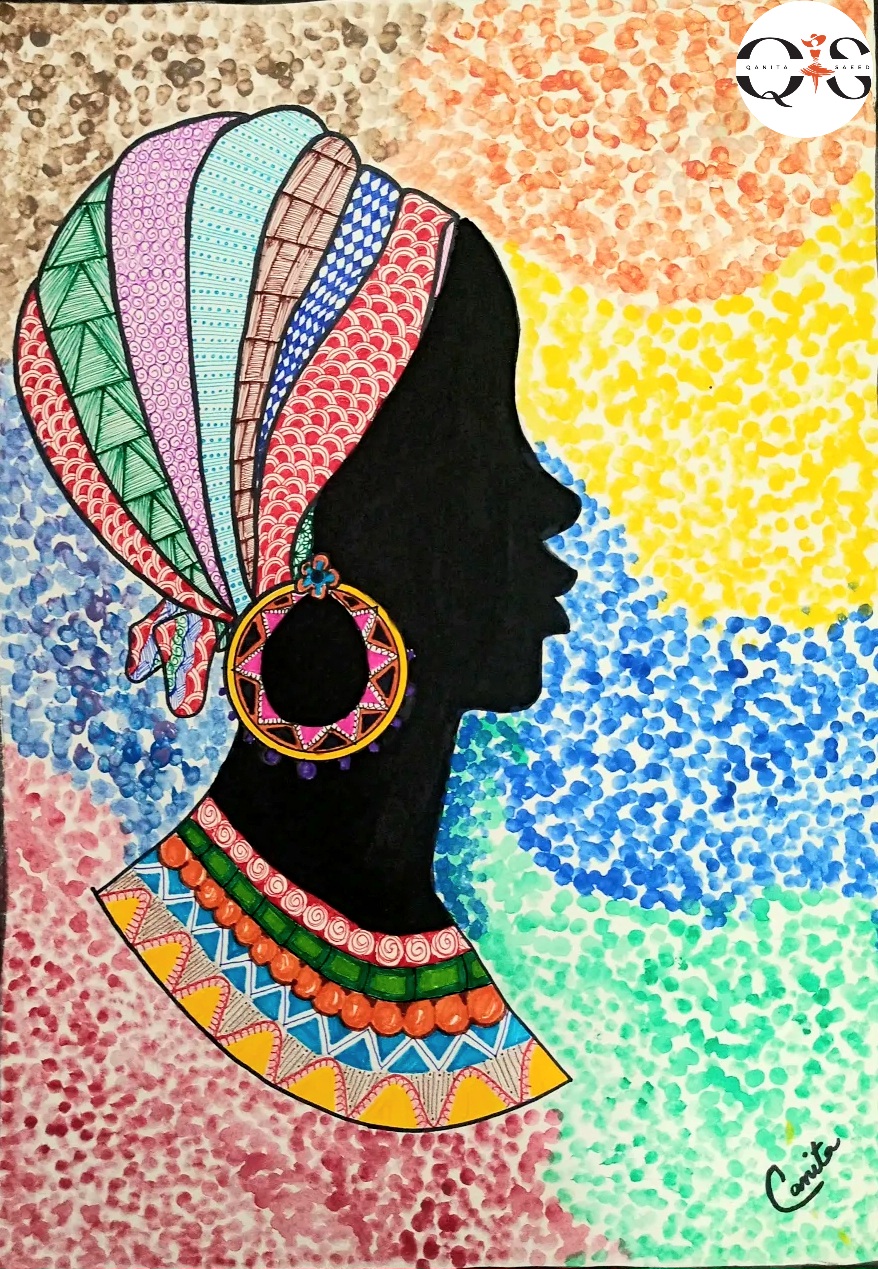The world of art is a vast realm where diverse cultures and artistic traditions intertwine, giving rise to breathtaking creations that reflect the essence of humanity. In this blog, we embark on a captivating journey, exploring the mesmerizing fusion of Mandala Art and African Heat Themes. By combining elements of both art forms, we witness the harmonious convergence of intricate patterns, vibrant colors, and profound cultural symbolism. This unique amalgamation not only showcases the creative process of artists but also celebrates the rich heritage and expressive nature of African culture.
I. Understanding African Heat Art:
The Essence of African Heat Art
African Heat Art, also known as African-inspired or Afrocentric art, is an artistic genre that draws inspiration from the vibrant culture, rich history, and diverse traditions of the African continent. It encompasses a wide range of visual art forms, including paintings, sculptures, drawings, textiles, and mixed media works. This art form is characterized by its bold colors, intricate patterns, and expressive imagery, reflecting the vitality, spirituality, and cultural significance of African communities.
Traditional Tribal Art
Indigenous African tribes have contributed immensely to the world of art through their distinctive creations. Traditional Tribal Art, such as masks, sculptures, pottery, and beadwork, reflects the unique style and symbolism of each tribe, encapsulating their cultural identity and beliefs.
Textile and Fabric Art
A significant aspect of African Heat Art lies in the creation of textiles and fabrics. Examples include the renowned Kente cloth from Ghana, mud cloth from Mali, or batik prints from Nigeria. These textiles feature intricate patterns, symbols, and vibrant colors, all of which carry profound cultural significance and storytelling elements.
Performance and Ritual Art
African Heat Art extends beyond visual forms and encompasses performing arts, such as music, dance, storytelling, and theatrical performances. These art forms are deeply rooted in African traditions, ceremonies, and celebrations, serving as a powerful means of cultural preservation and expression.
II. The Intricacy of Mandala Art
Unveiling the Essence of Mandala Art
Originating from ancient spiritual traditions, Mandala Art is characterized by its intricate geometric patterns that radiate from a central focal point. The term "mandala" is derived from the Sanskrit word meaning "circle," symbolizing the unity and harmony of the cosmos. Mandalas have been embraced by various cultures worldwide, serving as visual representations of spiritual and cosmic concepts.
Sacred Geometry and Symmetry
Mandala Art often incorporates sacred geometry and symmetrical designs. Through meticulously crafted patterns and repetitive motifs, Mandala Art evokes a sense of balance, tranquility, and interconnectedness.
Meditation and Self-Reflection
Creating or observing Mandala Art is often regarded as a meditative practice, enabling individuals to delve into a state of mindfulness and self-reflection. The process of engaging with mandalas can bring about a sense of calm and introspection, fostering a deeper connection with oneself and the surrounding world.
III. The Fusion of Mandala Art and African Heat Themes:
Embracing Similarities and Interconnections
When Mandala Art and African Heat Themes merge, a captivating synergy emerges. Both art forms share commonalities, such as intricate patterns, vibrant colors, and a profound emphasis on symbolism and cultural expression. By intertwining these elements, artists create a visually stimulating and culturally significant narrative.
Blending Symbolism and Cultural Significance
The fusion of Mandala Art and African Heat Themes provides a unique opportunity to blend symbols and motifs from both traditions. This amalgamation enables artists to infuse their creations with layers of meaning, drawing from the spiritual, historical, and cultural contexts of both art forms.
Celebrating Cultural Heritage and Diversity
The combination of Mandala Art and African Heat Themes celebrates the rich and diverse heritage of African culture, while also honoring the universality of artistic expression. It serves as a platform for cross-cultural dialogue and appreciation, inviting individuals from various backgrounds to engage with the profound narratives woven into each artwork.
Conclusion
The fusion of Mandala Art and African Heat Themes represents a convergence of creativity, cultural expression, and the celebration of heritage. Through this harmonious blend, artists create visually stunning and emotionally resonant works that bridge gaps and foster understanding. This unique artistic synergy not only highlights the interconnectedness of artistic traditions but also invites us to appreciate the vibrant cultures and histories that inspire such creations. In embracing the fusion of Mandala Art and African Heat Themes, we embark on a journey of discovery, enlightenment, and celebration of our shared human experience.


